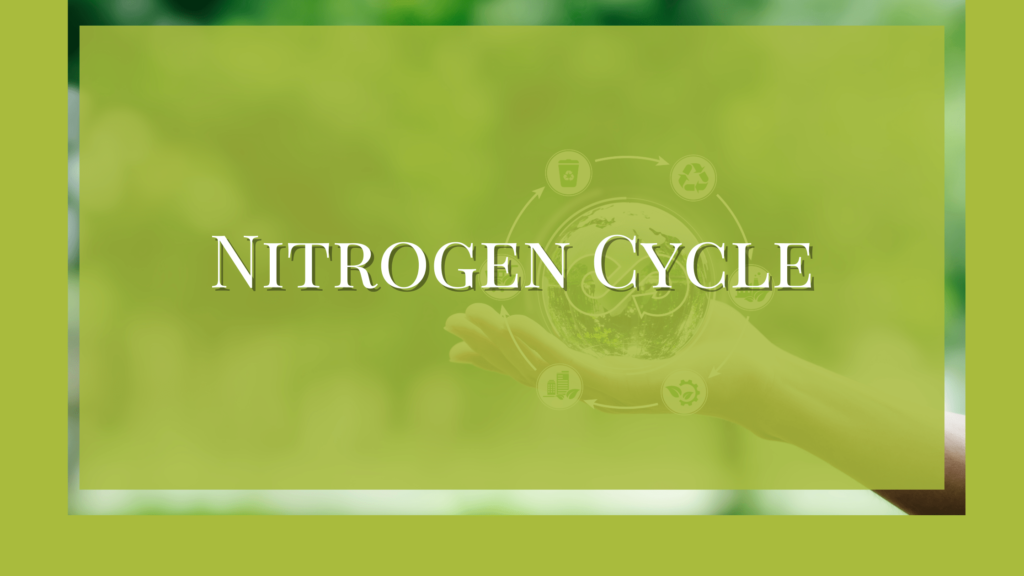Nitrogen is one of the critical elements necessary for all living beings. The ultimate source of nitrogen in the biotic community is the free nitrogen in the air. Although free nitrogen accounts for almost 79% of the atmospheric air, plants and animals cannot use it directly.
Living organisms get nitrogen for their usage through the process of nitrogen cycle that involves various other biological and chemical processes.
Process of Nitrogen Cycle
The free nitrogen first needs to be converted into soil nitrates in different ways and then to nitrites. The green plants absorb the nitrates or nitrites from the soil and ultimately convert them to amino acids. These amino acids are later incorporated into proteins which are later consumed by animals.
Excretion of animals and dead bodies of both plants and animals are attacked by ammonifying bacteria which convert the nitrogen bound in the organic compounds into ammonia. This ammonia is later oxidized by chemosynthetic nitrifying bacteria.
First, it is converted into nitrites and finally into nitrates. Some of the nitrates are reabsorbed by plants and the remaining is reduced to free nitrogen by denitrifying bacteria and it reaches the atmosphere.
The free nitrogen is once again fixed by nitrogen-fixing symbiotic bacteria present in the root nodules of legumes and some forest trees, certain free-living saprophytic soil bacteria, blue-green algae, some mycorrhizal fungi, etc.
Part of the free nitrogen in the air is oxidized to nitric acid by electric discharges in the atmosphere and is returned to the soil as acid rain. A portion of the nitrates present in the soil is carried down to the deeper strata of the earth through a process called leaching. This nitrogen will be out of circulation unless reclaimed.
Nitrogen Cycle in the Aquatic System
Many marine blue-green algae like Nostoc, Anabaena, Gleotrichia, etc are reported to bring about nitrogen fixation in seawater.
A part of the soluble nitrates is washed into the oceans by rivers. Here it is utilized by marine autotrophs to produce organic matter. It will ultimately find its way into the bodies of fish and marine birds.
A portion of the dissolved nitrates and bound nitrogen in the dead plants and animals sink to the ocean bed and thus go out of circulation. Some of this lost nitrogen is reclaimed by the activity of decomposers resulting in the regeneration of free nitrogen.
How Humans are Altering the Process of Nitrogen Cycle
Various human activities are affecting the normal process of nitrogen cycle. The primary interferences come from the combustion of fossil fuels and the excess usage of nitrogen-based fertilizers for agriculture. It affects the equilibrium of this element and causes an imbalance in the ecosystem.
The imbalance of nitrogen in the forest affects the growth of trees and a decline in biodiversity. An increase in nitrogen availability will have an impact on the carbon storage capacity. That affects the carbon cycle.
Excess nitrogen from the fertilizers pollutes the soil and also leaches into water bodies. Here, the irregular availability of nitrogen reduces the oxygen content in these water bodies, affecting the oxygen cycle as well. This can alter the food web and degrade the habitat. One such example is the algal bloom and destruction of fishes, shellfish, etc.
Thus, nitrogen, one of the essential elements for life can become destructive and lethal if the process of the nitrogen cycle is altered or suffers an imbalance.
References
- Shukla, R.S. and Chandel, P.S. (2001) Plant Ecology. S. Chand and Company Ltd., New Delhi.
- Verma, P.S., Agarwal, V.K. (1999). Cell biology genetics molecular biology evolution and ecology. New Delhi: S.Chand Co.(Pvt) Ltd.
- Bernhard, A. (2010) The Nitrogen Cycle: Processes, Players, and Human Impact. Nature Education Knowledge 3(10):25





Thanks for sharing your knowledge on this topic. It’s much appreciated.